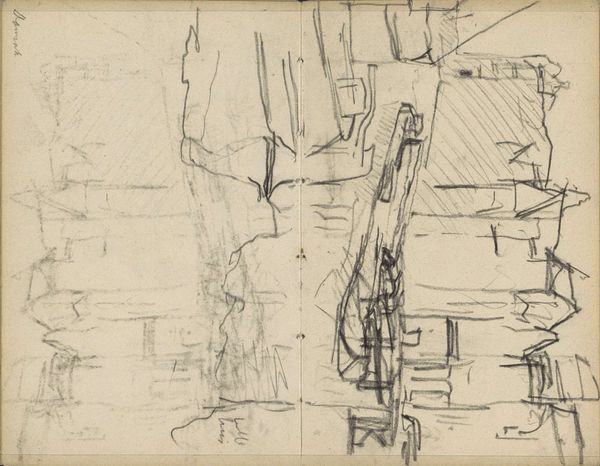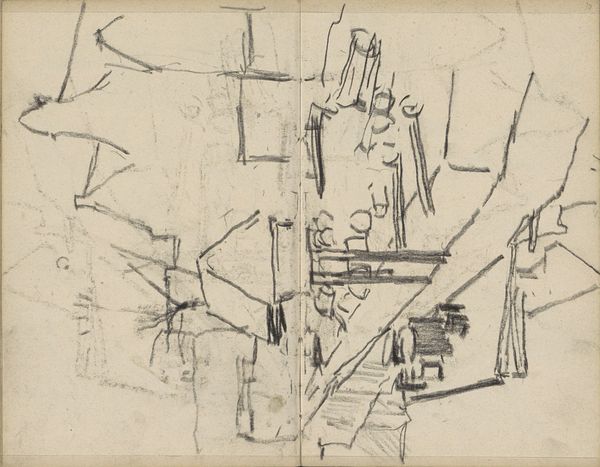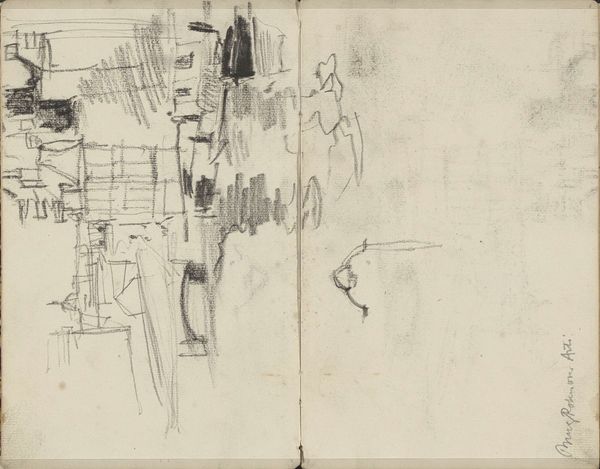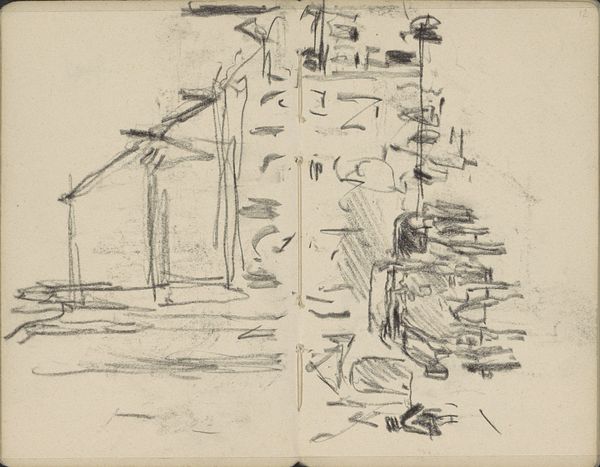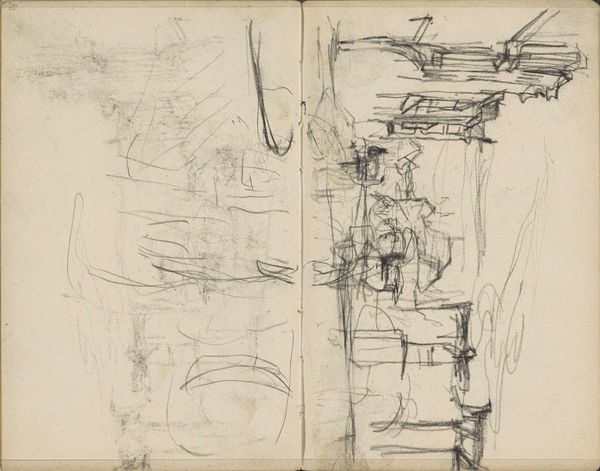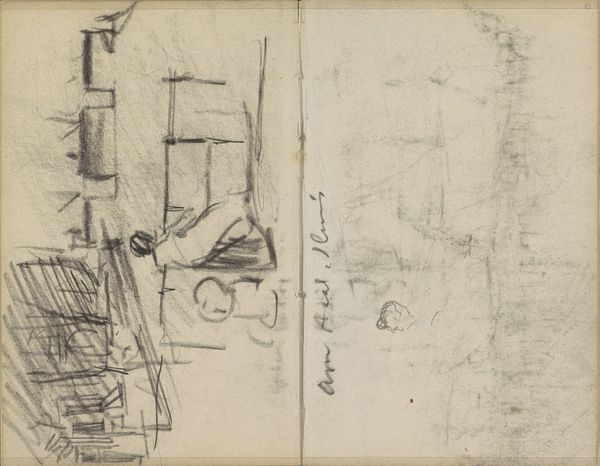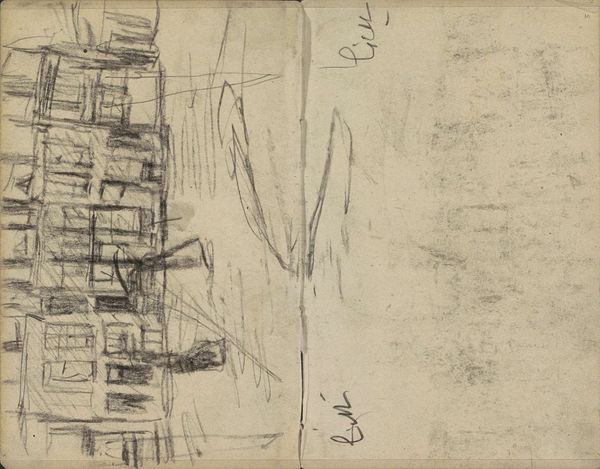
Gezicht op het Rokin te Amsterdam met trampaarden c. 1892 - 1923
0:00
0:00
georgehendrikbreitner
Rijksmuseum
Copyright: Rijks Museum: Open Domain
Editor: This sketch by George Hendrik Breitner, titled "Gezicht op het Rokin te Amsterdam met trampaarden," dates from around 1892 to 1923. It's a pencil drawing, and it strikes me as incredibly raw and immediate, like a fleeting glimpse of city life. What do you see in this piece, especially considering its time? Curator: Absolutely. Breitner's sketch is so interesting because it captures a moment of rapid transformation in Amsterdam. We see the "trampaarden"—horse-drawn trams—a mode of transport quickly being replaced by electric trams. It speaks to a societal shift, the tension between tradition and modernity, right? But beyond the technological change, consider the social implications. Who had access to this new form of transport? How did it alter the pace and experience of urban life for different social classes? Editor: So, it's not just a cityscape, but a snapshot of societal change. The immediacy of the sketch makes that even more palpable. Curator: Precisely! Breitner was interested in portraying the lived experience of the everyday, often focusing on the working class and marginalized communities. This sketch, though seemingly simple, can be a lens through which to examine the evolving social fabric of Amsterdam during that period. The seemingly rushed nature could speak to his capturing the everyday and fleeting moments of ordinary people and ordinary life. It's not posed, right? How does that change your read of it? Editor: That definitely shifts my perspective. I was initially drawn to the sketch's simplicity, but knowing Breitner’s social focus, it becomes more poignant. It is more activist in nature now. Curator: Exactly. Consider also that these sketchbook pages are incredibly private. It's the artist at their most vulnerable before these sketches are refined. This gives us insight into the social consciousness of the artist himself. Editor: It's fascinating how much historical and social context can be unpacked from such a simple drawing. Curator: Absolutely. It's a reminder that art is never created in a vacuum, but reflects and engages with the world around it. These glimpses of the past provide critical insight into how to move forward in the future, too. Thanks for sharing your fresh insights.
Comments
No comments
Be the first to comment and join the conversation on the ultimate creative platform.
